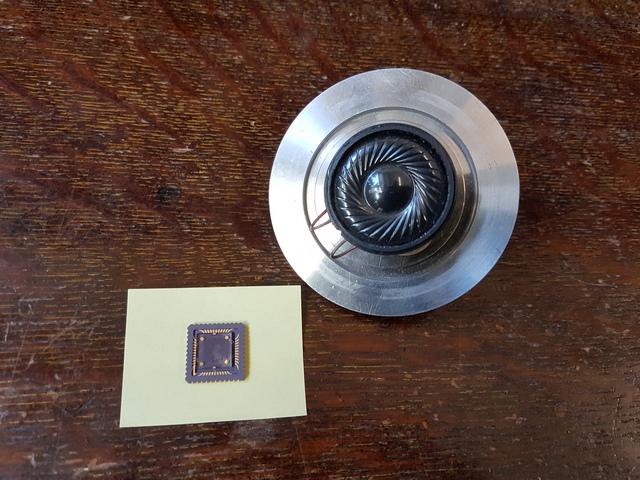
(Credit: David Horsell/University of Exeter)
Speakers usually generate sound through mechanical means, with coils or membranes physically pushing air. The new device, described in the journal Scientific Reports, has no moving parts. Instead, a layer of graphene is rapidly heated and cooled by an alternating electric current. This thermal variation causes the air to expand and contract, creating sound waves.
Although using heat to generate sound is not new, the Exeter team claims it is the first to demonstrate that the process allows different frequencies to be mixed, amplified and equalised, all within a millimetre-sized device. According to the researchers, the ability to generate complex sounds without physical movement could open up new areas of technology, such as smartphone screens that deliver sound as well as pictures.
"Thermoacoustics has been overlooked because it is regarded as such an inefficient process that it has no practical applications,” said lead author Dr David Horsell, senior lecturer in Exeter’s Quantum Systems and Nanomaterials Group.
“We looked instead at the way the sound is actually produced and found that by controlling the electrical current through the graphene we could not only produce sound but could change its volume and specify how each frequency component is amplified. Such amplification and control opens up a range of real-world applications we had not envisaged."
As well as consumer electronics, the technology also has potential in healthcare, with ultrasound imaging identified as a possible application. With the graphene devices being easy and cheap to fabricate, the team says they might one day be used to develop intelligent bandages that could monitor and treat patients directly.
"The frequency mixing is key to new applications,” said Horsell. “The sound generating mechanism allows us to take two or more different sound sources and multiply them together. This leads to the efficient generation of ultrasound (and infrasound).”
“However, the most exciting thing is that is does this trick of multiplication in a remarkably simple and controllable way. This could have a real impact in the telecommunications industry, which needs to combine signals this way but currently uses rather complex and, therefore, costly methods to do so."










McMurtry Spéirling defies gravity using fan downforce
Ground effect fans were banned from competitive motorsport from the end of the 1978 season following the introduction of Gordon Murray's Brabham...